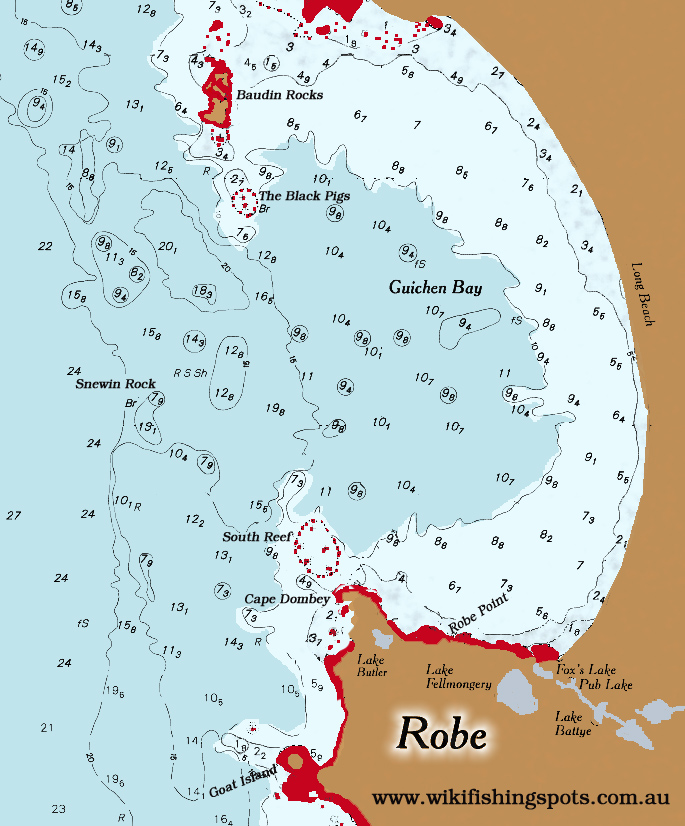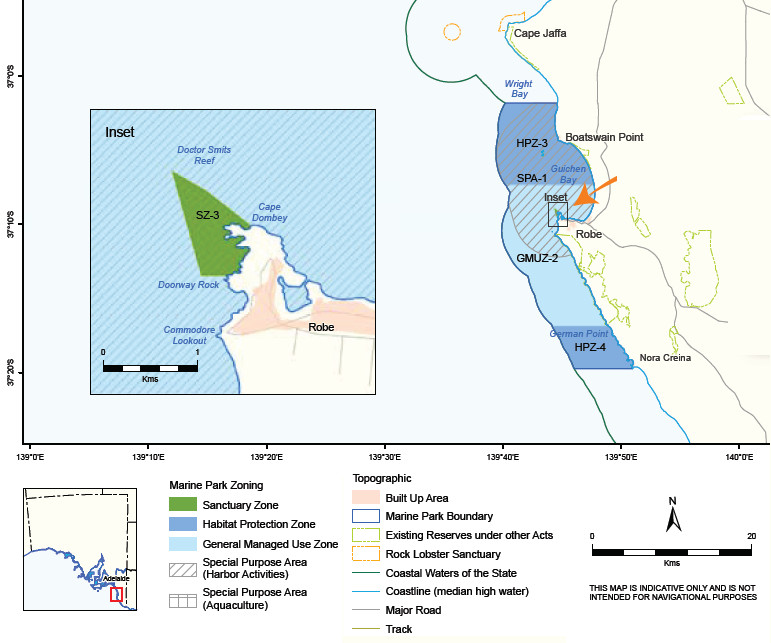
Port Fairy is an all-round location with a river and reasonable sea access to excellent offshore grounds.
There are boat ramps at Port Fairy, Killarney and Yambuk Lake, with the last suitable only for cartoppers.
Salmon are one of the more common fish, mainly caught in the surf, but they show up everywhere.
They are caught all year but are best in winter and spring. Smaller fish enter Moyne River.
Snapper are best in summer and autumn. They are usually around rubble or rock bottom, but do enter the Moyne River channel in summer.
Coastal species include barracouta, caught all year, best in winter and spring. Coutta enter the Moyne River channel in winter but are more usually caught along the coast.
Black bream are caught in the Moyne, with the best fishing downstream of the footbridge.
Cod are caught in the bay and upper estuary from Martin’s Point to the end of the channel of Moyne River. They are caught year-round but winter is best, and at night.
flathead are caught all year, with warmer months best.
Yelloweye mullet are caught in close along the beaches, with winter best. They are also caught in the Moyne estuary. There is no need to cast far for them in the surf.
Garfish have separate runs in the summer and winter. Use a light line, float, tiny baits, and berley to bring them around.
Mulloway are occasionally caught in the Moyne River estuary. Summer is best, at night. Use small live fish for bait. Better mulloway fishing is had at the Glenelg River at Nelson.
Bluethroat wrasse are caught along most rocky areas. They bite all year, as do sweep, which like whitewash areas.
Estuary perch are caught in Moyne River mainly downstream from the footbridge. Try snags or trees hanging over the water, or bridge pylons. Summer is best.
Bluefin tuna are caught out towards the Continental Shelf, but sometimes come closer in. March to May is the best time.
Silver trevally are caught all year but spring is best.
Spotted whiting are found on sand patches adjacent to weedbeds. Most local bays hold these fish. They are best in summer and autumn.
Yellowtail kingfish are caught off the rocky coastline in mid to late summer.
Sand whiting are usually common off the beaches.
Freshwater fishing can be had in the upper Moyne, and also in the Hopkins and Merri Rivers at Warrnambool to the east.
Here is a list of recommended tackle for Victorian waters.

Port Fairy weather and tides
VIC fishing regulations
VIC marine parks
Email corrections, additions, pictures or video here.



